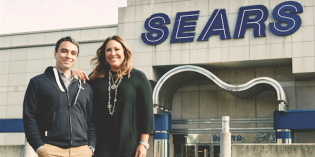Native advertising is more than a buzz phrase, it’s the highly measurable evolution of display advertising and it’s giving progressive marketers more of want they want: results.
As more reports and case studies are published highlighting the benefits of native advertising, it’s increasingly obvious that the format is engaging users and delivering key metrics across the board—from brand awareness to purchase intent and closing the deal.
The future is here and it’s time to get on board, says Yahoo audience sales director Tom Giovingo, who believes advertisers may be overthinking native. “For the most part it’s the evolution of display advertising—the difference is that the format is not a traditional IAB standard ad unit—native is naturally integrated with the content experience.”
Brands have the opportunity to leverage message and media to connect with audiences in a way that enhances, rather than disrupts, the user experience.
“It’s about becoming a seamless part of the experience, part of the flow,” says Giovingo. “That is where advertisers can really hit it out of the park – we looked at the user experience and made the advertising more relevant as part of it.”
Native ads are relevant, earning valuable real estate in the content stream and across Yahoo’s mobile and desktop platforms.
“Really, native is a matter of following the same form and function of content,” says Giovingo. “The actual design is meant to look like the rest of the user experience.”
And it’s working: 70% of consumers prefer to learn about products through native advertising versus traditional advertising formats, saying it blends so seamlessly with other content that it feels like it belongs, according to the IAB.
Several of Yahoo’s internal studies further illustrate the power of mobile native ads.
One focused on the retail sector, surveying 400 in-market consumers ages 18-54 who planned to buy clothing in the next three months. It found:
• 121% lift in top-of-mind brand awareness
• 43% lift in unaided brand awareness
• 16% lift in purchase intent
• 8% lift in intent to recommend
And, the benefits go beyond mobile, with one study examining the performance of native ads compared to traditional display ads on desktop platforms. It analyzed nine campaigns spanning various industries and found that consumers who viewed native ads were much more motivated to take action:
• 264% more likely to do a brand-related search
• 285% more likely to visit the advertiser’s website
• 508% more likely to conduct generic searches in category.
Numbers like this are hard for brands to ignore.
“They like the performance,” says Giovingo. “Advertisers using native and mobile search advertising together have seen lifts in site views up to 3.9X higher than traditional display banners. We’ve also seen native advertising drive performance metrics like search activity. Clients have seen branded search activity increase up to 3.6X when combining native ads with mobile search.”
And, advertisers can react quickly. For instance, if a major retailer is running a native campaign, Yahoo can determine which users are clicking on an ad and what action they’re taking. In turn, campaigns can be adjusted if necessary.
The personalization aspect further adds to native’s appeal, positioning advertisers as valuable service providers. For instance, Giovingo says if a consumer is researching a new pair of running shoes and a relevant ad shows up on the page, that targeting represents native advertising done right: “That ad is just as important as any story, because it’s part of the consumer’s life.”
While a lot has happened on the native front in the last six months, the possibilities are just beginning to unfurl as publishers and advertisers challenge themselves to create smarter campaigns that deliver better performance and enhanced user experiences.
To find out more, you’re invited to Make an impact with Native Advertising, a Yahoo webinar today at 12 p.m. ET Click here for details. Use promo code: IMPACT to register for free.









